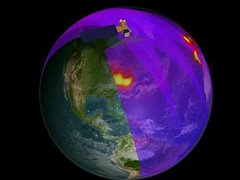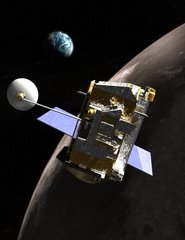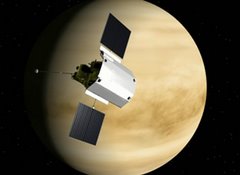On this tour I am a keyboard programmer (and re-programmer). In the world of instrument techs, we are often referred to as the rocket scientists, huddled over our displays punching buttons and twirling jog wheels. Due to your graciousness, I have now confabbed with real rocket scientists in the rocket scientist clubhouse.
After I saw the room with the flat sat and the test team, I had to laugh on how similar my workspace looks and operates when I am designing and setting up a keyboard rig for a tour.
Additionally:
It must be able to be delivered to a predetermined set of coordinates, deploy, perform a mission, and return safely. It must be re-deployable again and again, or the next show will be, well, deplorable.
It is assembled from instruments constructed by different teams from different countries at different points in time. Sometimes components are pillaged from previous missions for cost and timeline reasons. Somehow this disparate pile needs to communicate and function together, so...
We drag all that stuff (and the stuff to test that stuff, and the stuff needed to fix the stuff once the test stuff confirms that something's whack) and a big pile of cable and connectors into a room, set it up on some tables and equipment stands and after (insert indeterminate number of hours and dollars, pizza and beer), we make it work, debug, improve, increase robustness.
We build mock ups redundant systems/components and data capture/backup are part of the design criteria. Technical support from the component manufacturers can be a daunting prospect.
We build complex wiring harnesses using a variety of connectors and ports. There are people in our field who are specialists at
Fortunately, the technology we use is quite advanced. One of the most commonly used connection systems was designed in the 1920's, abandoned long ago by the original specifier. Our primary communication protocol - MIDI - that allows keyboard components to talk to each other is based on a serial hexadecimal language created in the late 70's. It has never been replaced.
There isn't even a MIDI 2.0. Most all keyboards and similar components using MIDI have a specific button or easily executed key command on the work surface labeled PANIC, used when the buffer overloads. The name and the fact that it even exists gives you all the info you need to know.
Once the system has been thoroughly tested, there is a burn in period. We then load the components into the specialized housings specified for the mission; it's often a tight fit with close tolerances. These housings and others are gathered together and become the payload, literally, in the transport vehicles. Many a manager have told many a promoter upon arrival, "We are not unloading the (expletive) truck unless you (expletive) pay us first!"
We operate in a universe in which stars explode, implode, collide, change their color (usually only the hair, but not always) increase in diameter, dim, die. Some of them exhibit behaviors that seem beyond the laws of physics, or at least beyond the law. Quantum mechanics apply; quasi-Shroedinger effects are commonly observed, in which someone is expected to be in two positions at once.
Surrounding these stars is a collection of lesser bodies that have been pulled into orbits around the stars. Planets, moons, objects; band, crew, poseurs - we each have our nomenclature. Nebulous clouds of gas are common, some of them inept. Inert, sorry. Bowing to your tradition of classical references, we call these egos, alternatively, "I am god!" or "Oh, my god..." (OMG's), from the Latin.
Solar flares do erupt, sometimes with local consequences. Dark matter exists, we work with it every day. Unlike you, we have regular contact and communication - more or less - with alien life forms, though our associates working on another project in this mission, the GTR (Guitar Tuning and Repair) techs, inform us that it is sometimes easier just to hand them their instrument and walk away. I trust their data.
The root of rocket is rock.
Therefore, in this newfound spirit of co-compatriosity, at the end of our mission, I would like to propose a test to be conducted in your massive centrifuge room, involving the keyboard rig I am 'project manager' of, and a ball of jute twine that has been soaking in a puddle of biodiesel in one of the bays of the tour bus for the lastyear. Maybe call it the Tour Twine Tensile Test or something catchy like that. Up to twenty five G's, huh? I'll spring for the stickers...
Thanks again and good luck with the LRO project. I will track your
project. Congrats.
Kurt Wolak
c/o Thrill Hill Production/Bruce Springsteen and the E Street Band 2007



